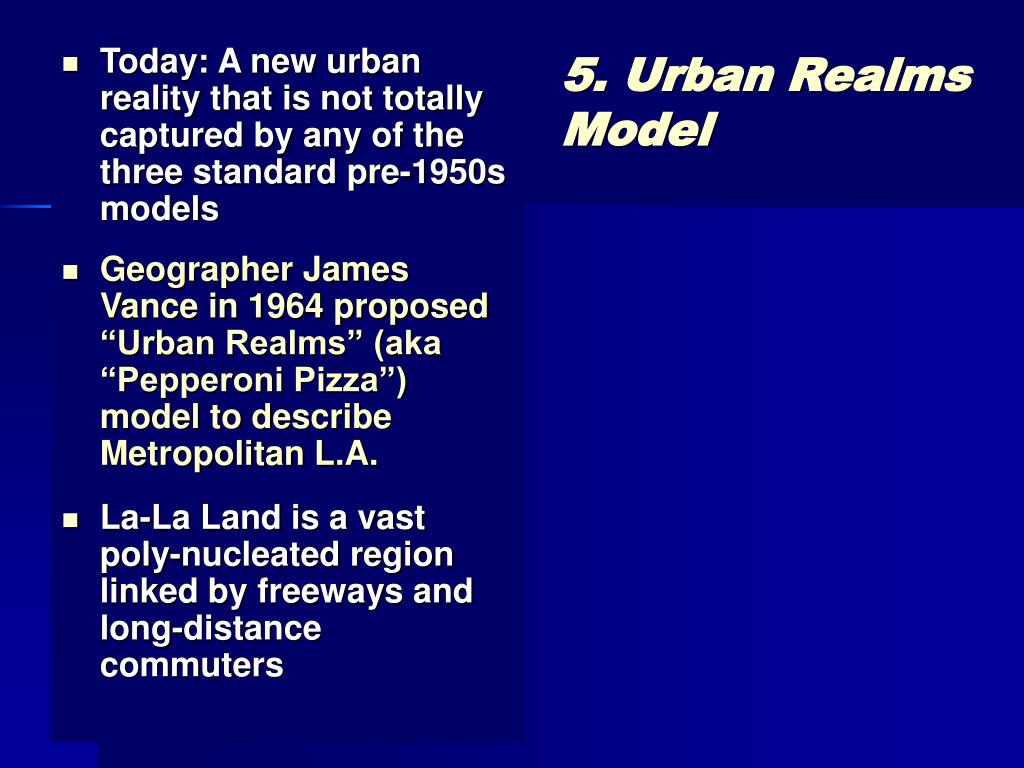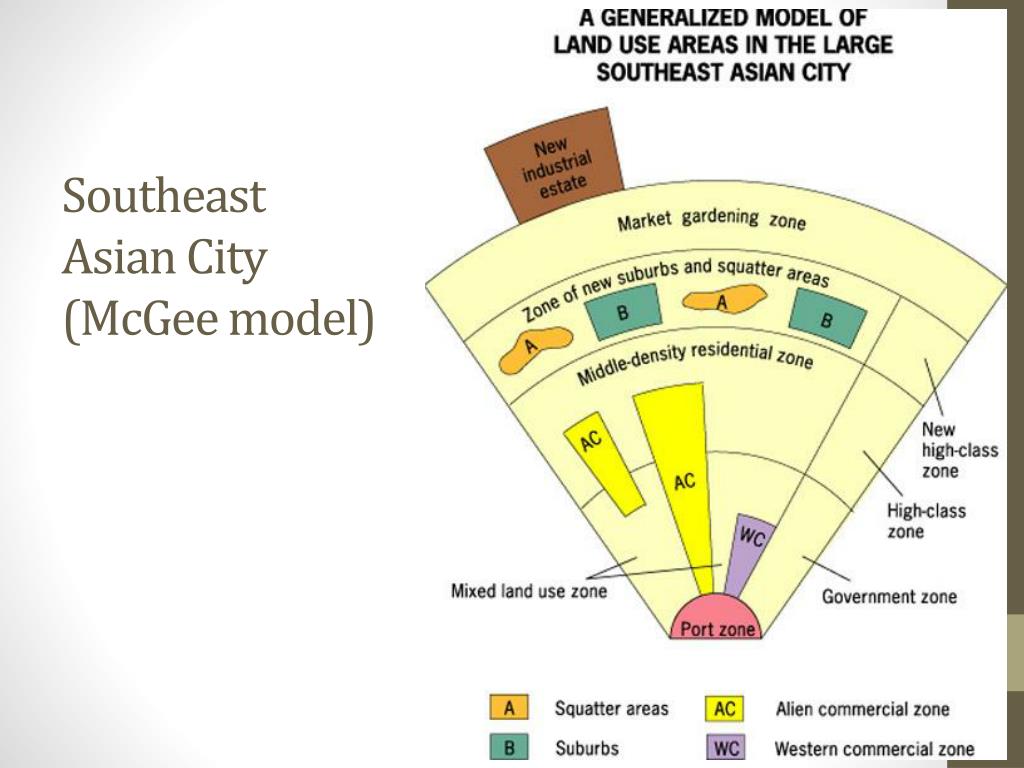
Today: A new urban reality that is not totally captured by any of the three standard pre-1950s models.Example: Starfish-like growth during streetcar suburbs era with Concentric Zone Model (sketch).How can a model be extended to become more realistic?.Not the point of a model to exactly replicate all aspects of reality.Are any of these models just like Tucson?.Proximity to other locations (universities, airport, malls) can generate clusters of high-intensity land use.Basic concept: cities don’t grow up around a single core but have several nodes.Developed by two geographers: Chauncey Harris & Edward Ullman in 1945 based on Seattle, Washington.How realistic are they for an auto-age metropolis like Tucson?.Both the concentric zone and sector models are monocentric representations of urban areas.This theory is particularly good for residential land use.


May have moved out from Zone 2 boarding houses as begin to assimilate, prosper, start families Important theoretical under-pinnings for this model provided by economists such as Alonso and Muth (who borrowed von Thunen’s ideas!) Single-family residences streetcar suburbs Model based on Chicago, so rings are only semi-circular due to Lake Michigan 1A CBD Proper 1B Fringe of CBD 2 Zone in Transition or ‘Gray Zone’ 3 Lower Income Housing 4 Higher Income Housing 5 Commuters’ Zone 4 3 2 Wholesaling, warehousing, truck & railroad depots >things that service CBD uses cannot afford extreme land values of CBD proper may need more land These uses haved moved out to circumpherential highways CBD = “Central Business District” In Chicago: “The Loop” Dept stores, office bldgs, banks, hotels, theaters > things that service entire metro area 1B 1A Mixed residential and commercial usesOlder residential area former homes of well-to-do have trickled down to low-income Businesses and light manufacturing, print shopsZone of slums, rooming houses, newly arrived immigrants Suburban areas containing satellite cities Burgess called this ring: “Zone of Independent Workers’ Housing”Industrial workers.Urban ecology: groups of people occupy over time different areas of the city like different plant species.

New field in 1920s called human ecology based on ideas from biology such as:

Best synonym: a model = “a representation”.8, 182-184 (Traditional Models) Optional: Phillips & LeGates Wheeler & Muller “It is a very fundamental principle, indeed, that knowledge is always gained by the orderly loss of information.” -Kenneth E. Geography/Planning 379 “Urban Growth & Development” Lecture 5: Urban Land Use Models What’s a Model? Concentric Zone Model (Burgess) Sector Model (Hoyt) Multiple Nuclei Model (Harris & Ullman) Urban Realms Model (Vance aka “Pepperoni Pizza” Model) READING Required: Textbook, Ch.


 0 kommentar(er)
0 kommentar(er)
